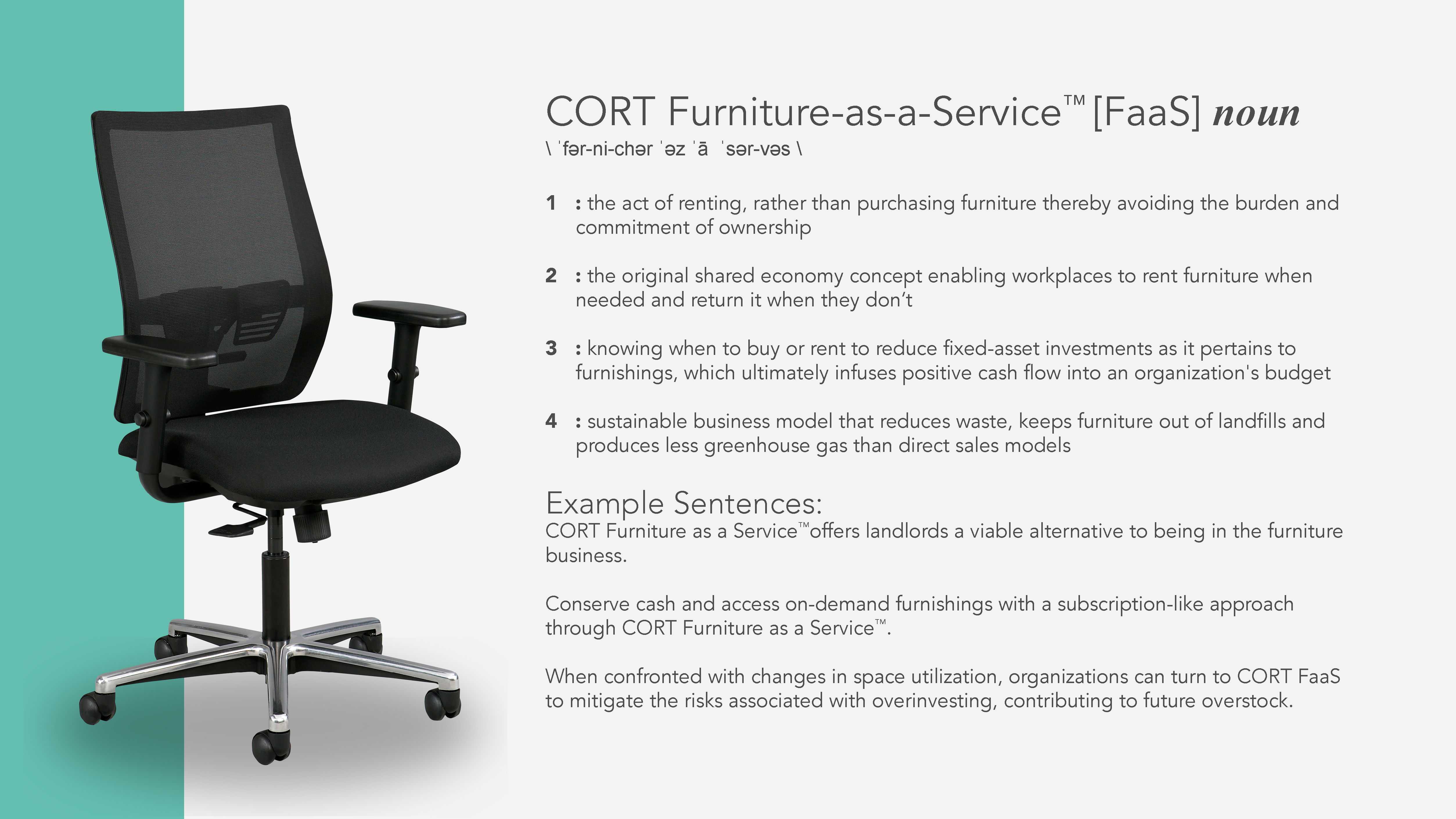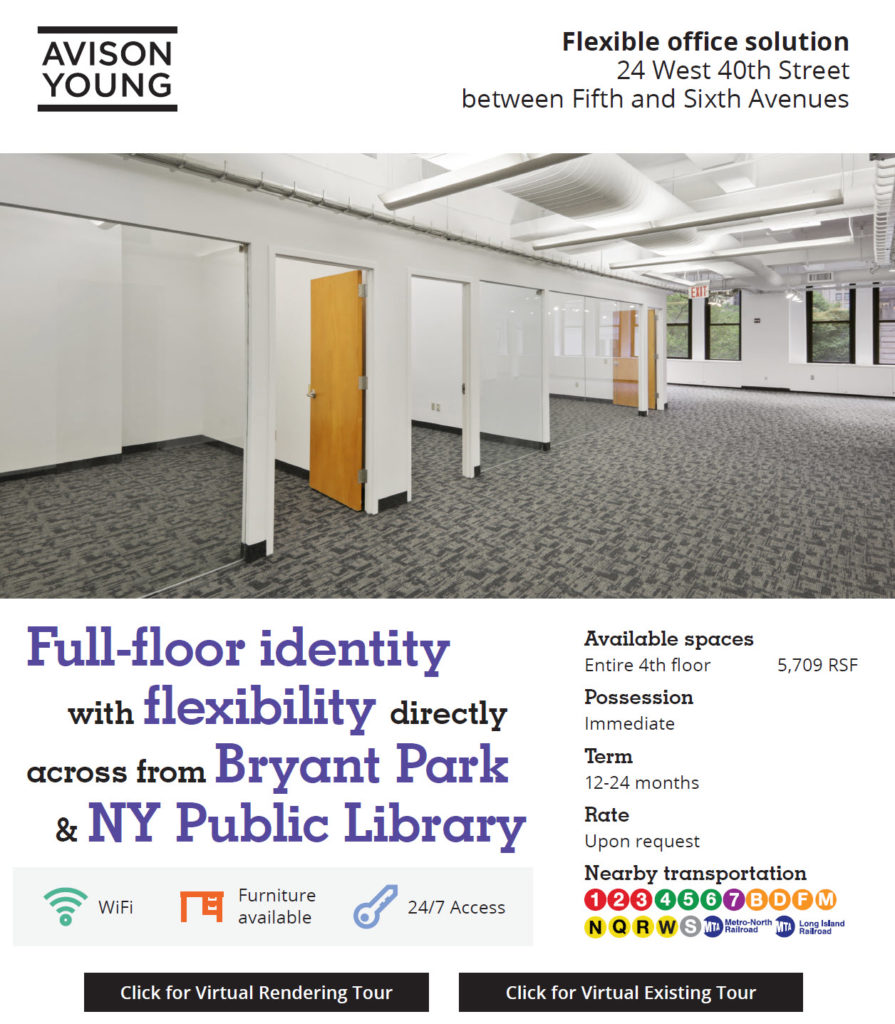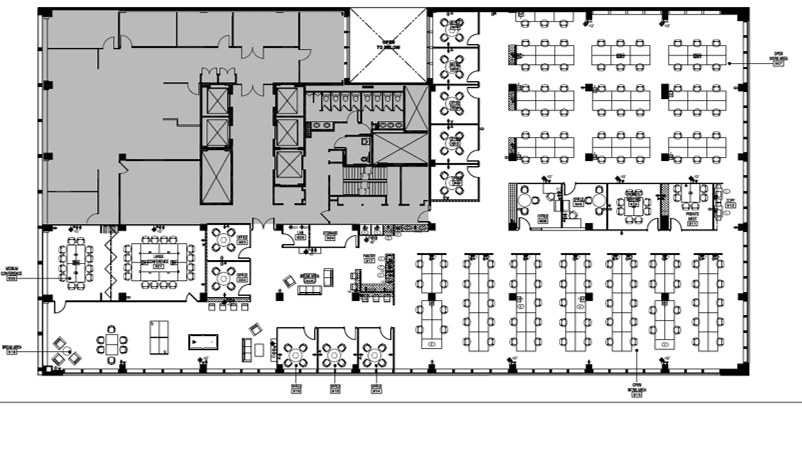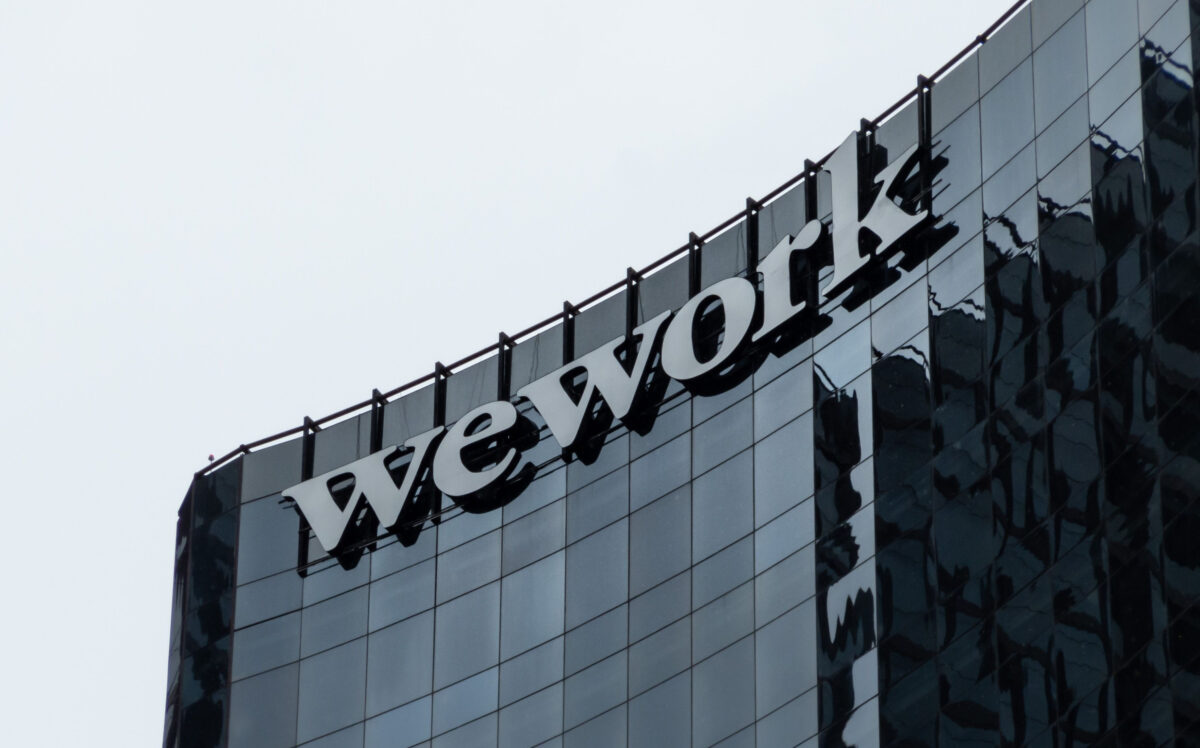Written by: Melanie Jones
It is early 2022. Do you agree a shift is occurring in the how, when, and where space will be utilized? If you do, you are not alone. Workplace strategists, real estate leaders, occupancy planners, and even human resources and finance gurus are busy weighing scenarios to determine what’s best for their company, how to revise space utilization, and offer employees choice.
Landlords and agency leasing teams representing them are experiencing very similar shifts in figuring out what, how, why, when, and where to offer space to their client base. Many are trying to quickly catch up to the pioneers working on this equation before the pandemic.
My colleague Ron Steinbrink and I work in this arena every day helping our landlord clients with the decisions in front of them right now. We decided to share a few thoughts on how a subscription approach to furniture supports the current retooling of creating, marketing, and delivering space.
What is CORT Furniture-as-a-Service™?
First though a quick overview of Furniture-as-a-Service (FaaS). It’s a relatively new term that originated at CORT, so we created a dictionary definition to help others learn.

In a recent episode of the WorkBold podcast, Todd Simpson, Managing Director of the Strategic Business Development team at CORT, describes FaaS like this.
“Imagine everything you need in an office environment, available in any quantity for almost any length of time that you can change or switch out as needed.”
So that is straightforward, but how exactly does this bring value to landlords? Let’s look at some of the basic applications and benefits.
Increasing occupancy!
The old saying, “nothing happens until somebody sells something,” translates nicely in the world of commercial real estate. Figuring out how to attract and retain tenants (customers) shifts the wheels in motion for landlords and the supporting services and teams—food for thought below.
Marketing = Tours
Companies like VTS, FastOffice, LiquidSpace, Square Foot, Matterport, and others continue to evolve the marketing efforts of commercial space. Today landlords can present space virtually and enlist the help of sophisticated demand channels to provide customers with digital and physical options during the shopping experience.
Plenty of new offerings and partnerships are emerging. One such example is the partnership of FastOffice and CORT.
With this offering, landlords now have the ability to:
- Virtually stage vacant space
- Market it and provide pricing as furnished or unfurnished
- Create test fits to evaluate occupancy
- Deliver furniture on-demand – return as needed
As an example of this concept, see a collaboration with Mike Gross and the team at Avison Young, in creating this interactive marketing piece for one of their landlord clients. Helping tenants’ visualize the space is often key in driving the next steps.
See the difference between an empty space versus a virtually furnished space with flexible furniture pricing aligned to the length of the lease.

Short-Term Lease Negotiations
Recently, I received a call from Ariel Suares, a Jones Lang Lasalle Washington DC Agency Leasing team member.
Ariel explained that her team was hosting a prospective tenant tour the next day and needed some help.
“The tenant is searching for an 18 or 24-month lease term, and we think the Furniture-as-a-Service offering is an option that could support their cash flow goals, detail occupancy data, and provide furniture for the term of the lease.”


Ariel provided a typical space plan and working with the CORT Space360™ platform, the JLL leasing team was able to quickly develop a game plan based on occupancy information and pricing scenarios for flexible furniture on-demand. All within 24 hours.
Closing The Deal
Swing Space: Often part of closing a big deal with a long-term tenant is the need for a Swing Space. Although secondary to the new space, the planning and execution of a swing space project can be massive; generally, there is no interest or need to purchase furniture in this scenario. FaaS has long been the go-to solution for planning, installation, execution, and removal.
Sublease: Sublease space is of interest to certain prospective tenants. We all know these spaces often have existing furniture and create win/win situations for all involved. Just as often, however, there is no furniture, or the current product is not of interest to a prospective tenant. CORT provides decommissioning services and then outfits the space with furniture aligned with the sublease term.
Furnished Space | Concessions: In a shifting workplace environment, many negotiations include a request for space to be furnished.
FaaS provides good news to landlords who do not want to be in the furniture business but are seeking creative strategies to meet tenant demands. One concept is for the landlord to provide flexible furniture as part of the office lease, perhaps with a margin. Also popular is providing a furniture allowance, and the tenant deals directly with CORT. Either way, the subscription approach could be the key to winning the deal.
As Ron mentioned recently, “leasing teams value CORT’s Space360™ offering because it enhances conversations with potential clients. Showing clients how a space will look when furnished helps them make decisions faster and shortens the selling cycle. Providing a unique solution that aligns with changes in space utilization often offers a competitive advantage for the leasing team—the tenant benefits by having multiple options from which to choose based on their situation.”
Flex. Agile. Spec. On-Demand!
The number one goal of most of our landlord clients is to increase occupancy across the portfolio; since the beginning of time, that has likely been the goal. With demand for flexible and furnished space rising, we’re helping landlords transform smaller and sometimes hard to lease vacant space into new streams of revenue with minimal risk or significantly reduced capital.
In this CoreNet published interview with Vik Aggarwal, founder of Flexibli, a Corporate Real Estate Consulting firm, we talk about “flexibility provides the safety valve to offset getting it wrong.”
As the quote above implies, what’s the cost of making the wrong decision? Often FaaS is compared to a purchase decision. Frequently purchase makes complete sense, and that’s precisely how we steer our customers.
However, the trend of access instead of ownership continues to bubble up, and more times than you’d think, it’s the better choice.
Consider the landlord who invests hundreds of thousands of dollars to create furnished space available with flexible terms. That’s great because this is the direction a percentage of customers want.
What’s not as favorable is having these furnished spaces sit idle month after month—or having a tenant come along who would like the entire space but does not want it furnished.
Landlords: Why You Should Consider Subscribing to Furniture with CORT!
There’s little doubt that Furniture-as-a-Service is helping landlords attract and support tenants and their changing needs and desires. There is tremendous value in understanding how this sustainable furniture subscription provides on-demand access to generate revenue and service tenants.
Our team heads up landlord solutions. We work to find the fit and demonstrate the value of this tool in your tool belt!
About Melanie
Melanie Jones is a self-described Furniture-as-a-Service activist. Her mission is to demonstrate the value of a furniture subscription (access instead of ownership) to commercial real estate leaders for their clients.
About Ron
Ron Steinbrink As the Director, Strategic Business Development for 15 states in the Mid-Atlantic, Mid-West, and Southeast, Ron is responsible for growing CORT’s businesses in these markets.






